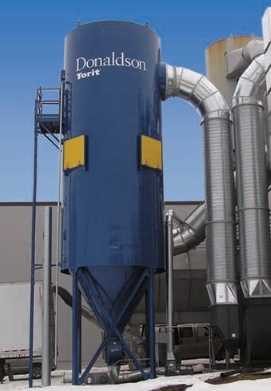
Call Us For Solution
+65 6570 9918
INTRODUCTION TO COMBUSTIBLE DUST
For decades Donaldson Torit has been providing dust collectors that have become an integral part of many plant’s combustible dust management strategies. As standards are updated or new requirements enacted, Donaldson continues to supply dust collectors to support your combustible dust control strategy. By interfacing with you and your experts on fire and explosion protection equipment and strategies, we can offer a selection of products to fit your application.
UNDERSTANDING THE BASICS
The U.S. Occupational Safety and Health Administration (OSHA) issued a National Emphasis Program and continues to communicate with most industries on the hazards of combustible dust. The agency’s focused effort
is targeted at reducing combustible dust risks in industrial plant settings.
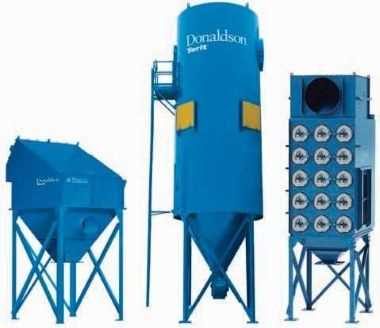
Many manufacturing processes create very small particles of dust which may become airborne, where they settle on surfaces and in crevices throughout the plant. Eventually these particles not only create a housekeeping issue, but they can also create a potentially explosive dust cloud when disturbed.
It is essential for plant leaders to understand the risks of combustible dust and ensure they manage combustible dusts in their facilities. Combustible dusts generally present both fire and explosion risks. It may help to consider the management of these risks separately.
This document is intended to increase your understanding of typical combustible dust management strategies and some of the components involved.
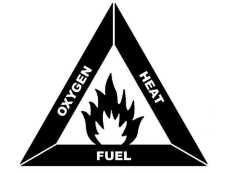
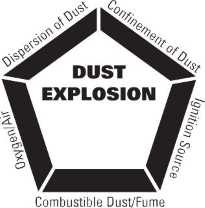
FIRE TRIANGLE
Fire mitigation strategies traditionally focus on the control or elimination of one of the three key elements necessary for a fire — often represented by the “fire triangle.” Controlling one or more of the elements in the triangle can decrease the fire risk.
EXPLOSION PENTAGON
Explosion risk mitigation strategies consider a slightly expanded set of control elements often represented as an “explosion pentagon.” In addition to the key elements from the fire triangle — fuel, heat, and oxygen, the explosion pentagon includes two additional elements: “Dispersion of Dust” and “Confinement of Dust.” As with fire mitigation strategies, the control or removal of one or more of the elements in the explosion pentagon can reduce the explosion risk. Controlling the same elements in the fire triangle, will also mitigate the explosion risk. Any mitigation strategies that focus on the dispersion of dust, or the containment of dust alone, may require a separate strategy to address any remaining fire risks.
MITIGATION STRATEGIES
COMBUSTIBLE DUST MANAGEMENT STRATEGY
The first steps is to complete a dust hazard analysis on your facility to determine if there are any combustible dust risks present. Next, review your options for both prevention and protection strategies. There are a variety of combustible dust mitigation strategies available allowing you to determine what will work for your facility.
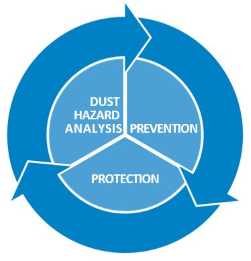
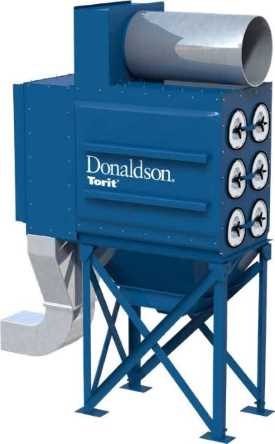
WHY DUST COLLECTORS SHOULD BE PART OF YOUR STRATEGY DECISION?
Many process requirements may make elimination of combustible dust, mist, or fume impractical. However, it may still be very possible to manage the dispersion of dust within your plant by using an appropriate and effective industrial ventilation system including dust collection. A well designed, maintained, and operated industrial ventilation system including effective hoods, proper duct sizes, and properly selected collection equipment can provide effective dust control and can therefore help manage the presence of dispersed dust. This not only reduces housekeeping frequency and expense, but could help you reduce the risk of dust
explosions or fires in your facility, by helping reduce the presence of dispersed fuel in your facility.
WHERE TO START?
The first step is to review any dust(s) generated at the facility and determine if a risk is present. A qualified lab can work with you to determine dust characteristics. Next perform a dust and process hazard analysis.
A Donaldson representative can then review your operational challenges to help you better understand how to integrate dust collection into your combustible dust management strategy. These considerations are designed to help you decide how you want Donaldson to support your combustible dust management strategy. Click below to see a detailed Combustible Dust Roadmap.
PREVENTION
Located within the intake ducting, this device create turbulence in the airstream that cools and extinguishes sparks without water or
chemicals.
Highly sensitive spark sensors located on the ductwork automatically trigger an extinguishing device and a spark alarm.
The extinguishing assembly reacts within 300 milliseconds of an alarm releasing a water spray curtain to extinguish sparks.
FIRE PROTECTION
Delivers clean, dependable CO2-based fire suppression to deep-seated fires in seconds. 
Allow ease of installation of sprinkler systems to extinguish fires quickly.
Inlet and outlet dampers work with a CO2-based fire suppression system to isolate the CO2 in the dust collector.
Fast-acting abort gates used in conjunction with spark detection systems can divert sparks, flames, smoke and
other dangerous material to a safe location.
EXPLOSION PROTECTION
Designed to rupture at specific pressure, these vents help minimize damage and direct the fireball and pressure into a safe
area in the case of an explosion.
These suppression systems can detect and react to explosion pressures in less than one millisecond to chemically suppress
explosions before they become catastrophic.
These systems detect explosive pressure and quickly inject a chemical suppressive to prevent the flames from an explosion
from propagating through the inlet or outlet duct.
Knife gates actuate within milliseconds of an explosion event to prevent the explosion from propagating back into the
building from either the inlet or outlet duct.
Flow actuated isolation valves on the inlet duct prevent the flames from explosions from propagating back into the building
from the dust collector.
Rotary valves can help prevent explosions from propagating through the dust collector hopper outlet.
STANDARDS, CODES, AND GUIDELINES THAT IMPACT DUST COLLECTOR DECISIONS
Many standards and codes may influence your decisions on dust control, including local, state, and federal regulations. Knowing the codes that apply to your facility is critical, and you should always research the code requirements in your area. A few commonly referenced standards for combustible dust risk management strategies include those issued by: National Fire Protection Association (NFPA), the International Mechanical Code, the International Fire Code, Factory Mutual Property Loss Data Sheets, and OSHA (federal).
Since each Authority Having Jurisdiction may have a specific set of codes or standards it references, you may need to have knowledge of more than one standard or code. Some of the most commonly referenced standards are published by NFPA, including both design and operational standards focused on combustible dust.
Since these standards are often referenced by OSHA, and have been adopted as code in many areas of the country, they may be a good starting point for consideration in developing your combustible dust management strategy.
- NFPA 652: Standard on the Fundamentals of Combustible Dust
- NFPA 61: Standard for the prevention of Fires and Dust Explosions in Agricultural and Food Processing Facilities
- NFPA 484: Standard for Combustible Metals
- NFPA 654: Standard for the Prevention of Fire and Dust Explosions from the Manufacturing, Processing, and Handling of Combustible Particulates Solids
- NFPA 655: Standard for Prevention of Sulfur Fires and Explosions
- NFPA 664: Standard for the Prevention of Fires and Explosions in Wood Processing and Woodworking Facilities
COMBUSTIBLE DUST EQUIPMENT INSTALLATIONS
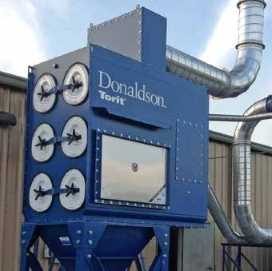
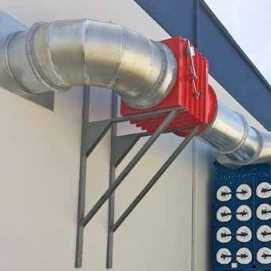
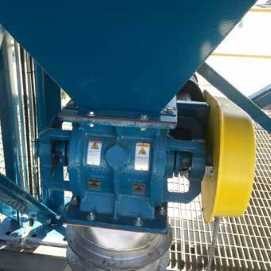
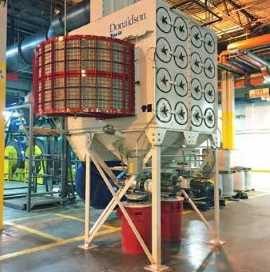
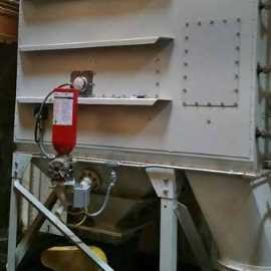
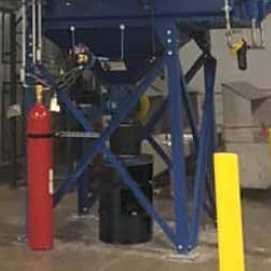
COMBUSTIBLE DUST STATEMENT
As a manufacturer and supplier of Industrial Filtration Products, Donaldson can assist process owners/operators in the selection of filtration technologies. Donaldson cannot, however, select fire and/or explosion mitigation strategies for process owners.
Compliance with applicable codes and standards remains the responsibility of the process owner/operator. Among other considerations, the current NFPA standards require owners/operators whose processes involve potentially combustible materials to have
a current Hazard Analysis, which can serve as the foundation for the process owner/operators hazard mitigation strategies.
Upon request, Donaldson can assist owners/operators to incorporate Donaldson filtration products into their comprehensive fire and/or explosion mitigation strategy. To provide this support, Donaldson needs complete and accurate information on all potentially combustible contaminants and the fire and/or explosion mitigation strategies that a process owner/operator intends to pursue.
